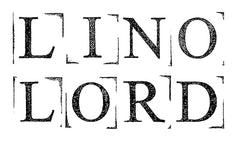Printmaking with Lino is a kind of relief printing that includes carving an image into a block of pliable Linoleum, rolling a thin coating of ink over the surface of the block, and then pressing paper on top of the inked surface to transfer the image. In many cases, the effects that you get with the sections that you have cut away are pretty stunning.
Prints made with Linoleum have a striking appearance due to their sharp edges, solid regions of color, and the stark contrast between the paper and the ink. You may spend a lot of time carving, or you can construct a design that is rather simple, but the printing process is pretty short, which means that several copies can be done simply and quickly. Many artists discover that working with Lino alters their approach, and works that seem hesitant or fragile when done in pencil take on a more self-assured, commanding aspect when translated into Lino prints.
When Was Lino First Used for Printmaking?
The use of Lino in artistic production is "primarily assigned to German Expressionists such as Erich Heckel (1883-1944) and Gabriele Munter (1877-1962"). The earliest black-and-white Linocuts appeared in the United Kingdom in 1912, while Russian Constructivist artists began using it as early as 1913. (paraphrased from a quote by Horace Brodzky). One "driving force" behind the development of color Linocuts is Claude Flight (1881-1955), who taught the medium at London's Grosvenor School of Modern Art from 1926 to 1930.
Picasso is widely believed to have made his first Linocut in 1939 and to have used the technique regularly until the early 1960s. Picasso is often credited with pioneering reduction Linocuts, in which a single block of Lino is used several times to create a multicolored image before being recut.
Types of Lino for Printing
Lino doesn't look all that great on its own. It feels and smells like a springy scrap of cardboard soaked in linseed oil. The traditional Lino comes in two colors: a drab gray that is referred to as "battleship grey," and an ocher that has a golden undertone. It might be difficult to cut if it's too chilly. Softening it by leaving it in the sun or next to a heater for a time makes it much simpler to cut.
Inevitably, manufacturers of artistic supplies would create Lino that is both more pliable and less difficult to cut. Traditional Lino will have a mesh of string on the back, whereas softer-cut Lino will not. It's beneficial to experiment with several Linoleum options to find one that you like working with the most. Traditional Lino is favored for the precise control it affords, while synthetic Lino is prized for its pliability for cutting intricate curves.
Bottom Line
Getting started with Lino printing can be a bit intimidating. But once you've done it a few times, it's far easier to find your footing with the medium. Visit Lino Lord for related blogs.

